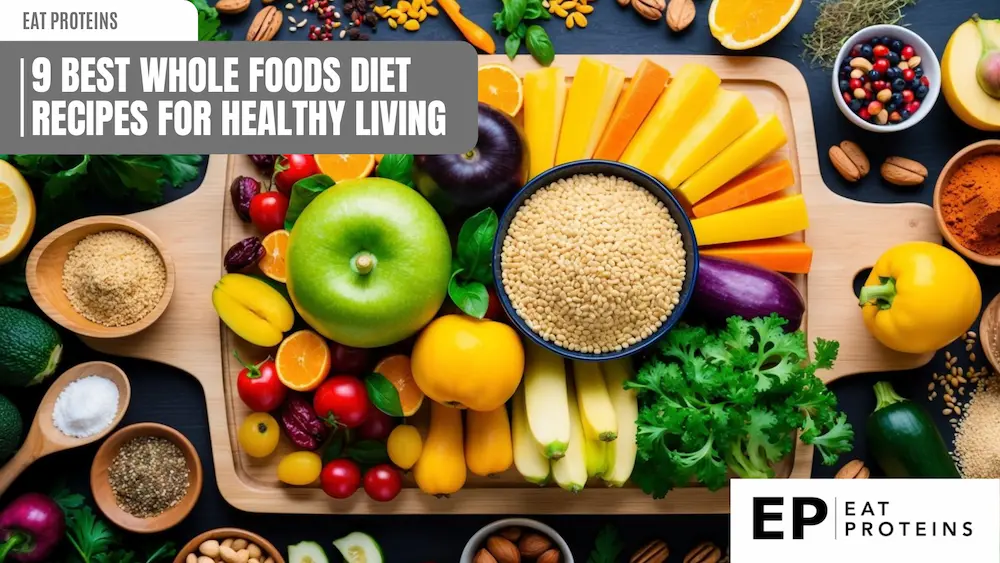
Eating a whole foods diet can significantly improve my health and well-being. Whole foods are natural and unprocessed, making them a great choice for nutritious meals. In this article, I will share nine of the best whole foods diet recipes that are not only satisfying but also easy to prepare.
These recipes will help me incorporate more whole foods into my daily meals while enjoying delicious flavors. By choosing nutrient-dense ingredients, I can feel more energized and maintain a balanced diet. Each recipe will showcase how simple it can be to create meals that support a healthier lifestyle.
1. Avocado Toast with Microgreens

Avocado toast with microgreens is a simple and nutritious dish. It combines creamy avocado with tiny greens that pack a flavor punch. Microgreens are young plants that are harvested just after the first leaves have developed. They offer a range of vitamins and minerals.
Making this dish is quick and easy. Here are the steps I follow:
- Start by toasting a slice of whole grain or sourdough bread until it’s golden brown.
- While the bread is toasting, slice half an avocado.
- In a bowl, mash the avocado with a fork. I like to add a pinch of salt and a squeeze of lemon juice for extra flavor.
- Once the toast is done, spread the mashed avocado evenly on top.
- Finally, top it with a handful of fresh microgreens for added crunch and nutrients.
This meal is perfect for breakfast or a light lunch. The fresh ingredients not only taste great but also provide healthy fats and vitamins. Enjoying avocado toast with microgreens is a delicious way to boost my whole foods diet.
2. Quinoa Salad with Chickpeas and Feta
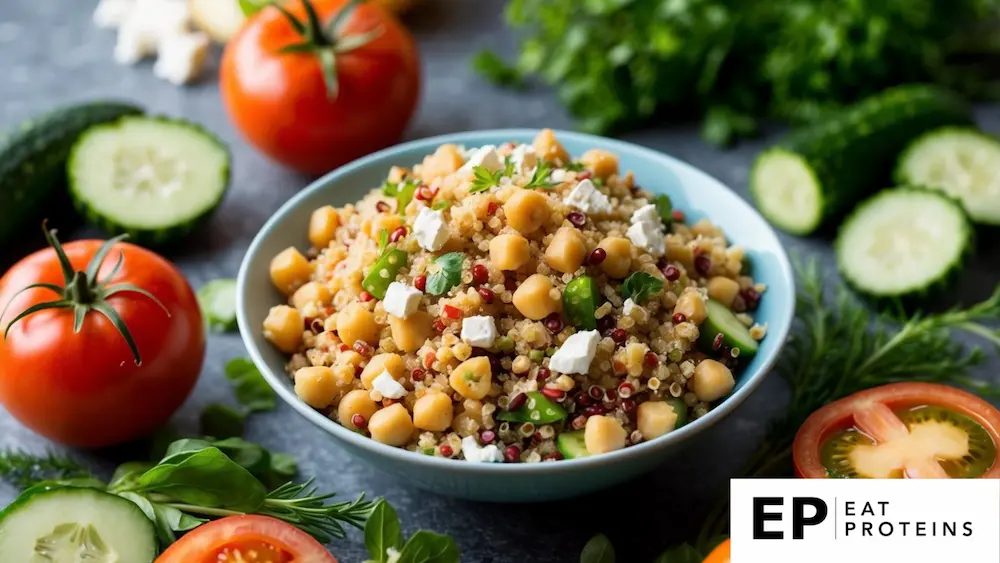
Quinoa salad with chickpeas and feta is a nutritious and tasty dish. Quinoa is a grain that is high in protein and gluten-free. Chickpeas add fiber, and feta brings a salty flavor.
Making this salad is simple and quick. I find it takes about 30 minutes from start to finish. Here are the steps I follow:
- Rinse 1 cup of quinoa under cold water.
- In a pot, combine the quinoa with 2 cups of water. Bring it to a boil.
- Once boiling, reduce the heat, cover, and simmer for 15 minutes until the quinoa is fluffy.
- In a large bowl, mix the cooked quinoa with 1 can of drained chickpeas, 1 cup of crumbled feta cheese, and 1 diced cucumber.
- Add juice from 1 lemon, 2 tablespoons of olive oil, salt, and pepper to taste.
- Toss everything together, and it’s ready to serve.
This salad is perfect for lunch or as a side dish. I enjoy it cold or at room temperature.
3. Overnight Chia Seed Pudding
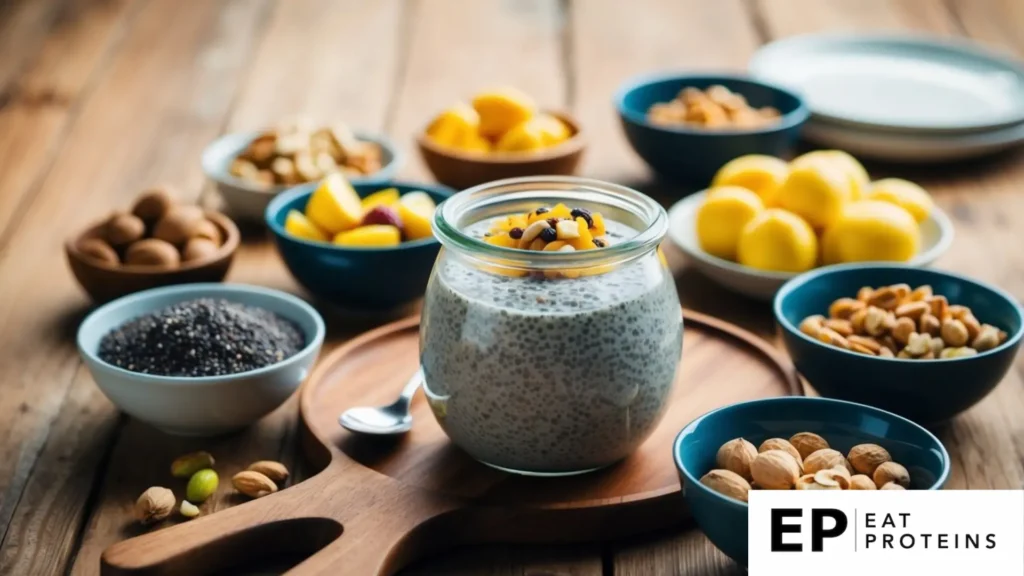
Overnight chia seed pudding is a simple and nutritious breakfast option. Chia seeds are small, black seeds from the Salvia hispanica plant. They absorb liquid, creating a gel-like texture when soaked.
To make chia seed pudding, I find it easy to prepare. The basic recipe involves just a few ingredients.
Here are the steps I follow:
- In a bowl, I mix 1/4 cup of chia seeds with 1 cup of my favorite milk, like almond or coconut.
- I add sweeteners or flavors, such as a tablespoon of honey or vanilla extract, if I want.
- Next, I stir the mixture thoroughly to prevent clumps.
- I cover the bowl and place it in the fridge overnight, or for at least 4 hours.
In the morning, my pudding is ready! It thickens nicely and can be topped with fruits, nuts, or granola for added flavor and texture. This makes my breakfast healthy and satisfying.
4. Zucchini Noodles with Pesto
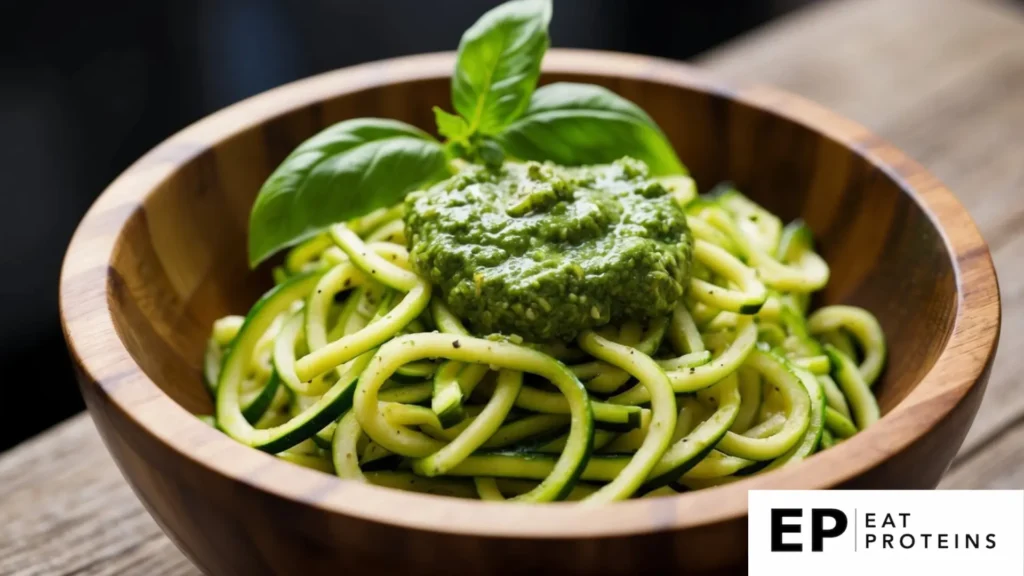
Zucchini noodles, also known as “zoodles,” are a great gluten-free alternative to traditional pasta. They are low in calories and packed with nutrients.
I find making zucchini noodles quite easy. They require just a few ingredients: zucchini, basil, garlic, nuts, olive oil, and salt.
Here are some simple steps to prepare them:
- Spiralize two medium zucchinis to create noodles.
- For the pesto, toast 1/4 cup of nuts for 1-2 minutes until fragrant.
- In a food processor, combine the toasted nuts, 2 cups of fresh basil, 2 garlic cloves, 1/4 cup of olive oil, and a pinch of salt.
- Blend until smooth.
After preparing the pesto, mix it with the zucchini noodles in a large bowl. Toss until the noodles are evenly coated.
This dish is quick and can be ready in under 30 minutes. It’s refreshing and perfect for a light meal.
5. Sweet Potato and Black Bean Chili
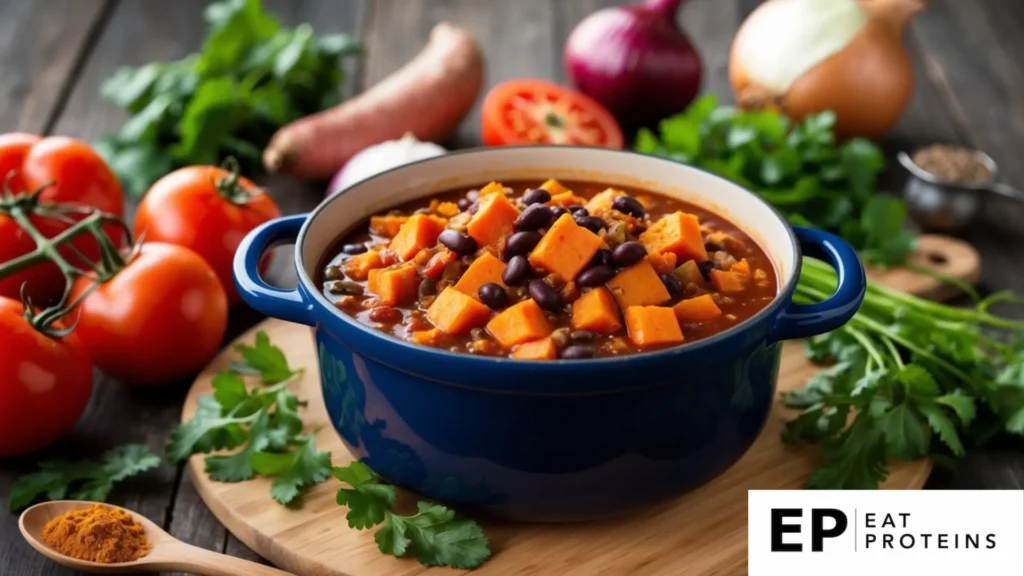
Sweet Potato and Black Bean Chili is a hearty dish packed with nutrition. It combines sweet potatoes and black beans, which are rich in fiber and protein. This meal is perfect for anyone looking for a filling and healthy option.
Making this chili is quite easy. I enjoy it because it requires simple ingredients and can be prepared in under an hour.
Here’s how I make it:
- Dice 1 large sweet potato and chop 1 onion.
- Heat 1 tablespoon of olive oil in a pot.
- Sauté the onion for about 3-4 minutes.
- Add the diced sweet potato and cook for another 5 minutes.
- Stir in 2 cans of black beans, drained and rinsed.
- Pour in 2 cups of vegetable broth.
- Season with cumin, chili powder, salt, and pepper to taste.
- Let it simmer for 20-25 minutes until the sweet potatoes are tender.
This dish is not only delicious but also versatile. I can easily adjust the spices or add other vegetables. It’s a great choice for meals throughout the week.
6. Grilled Salmon with Asparagus
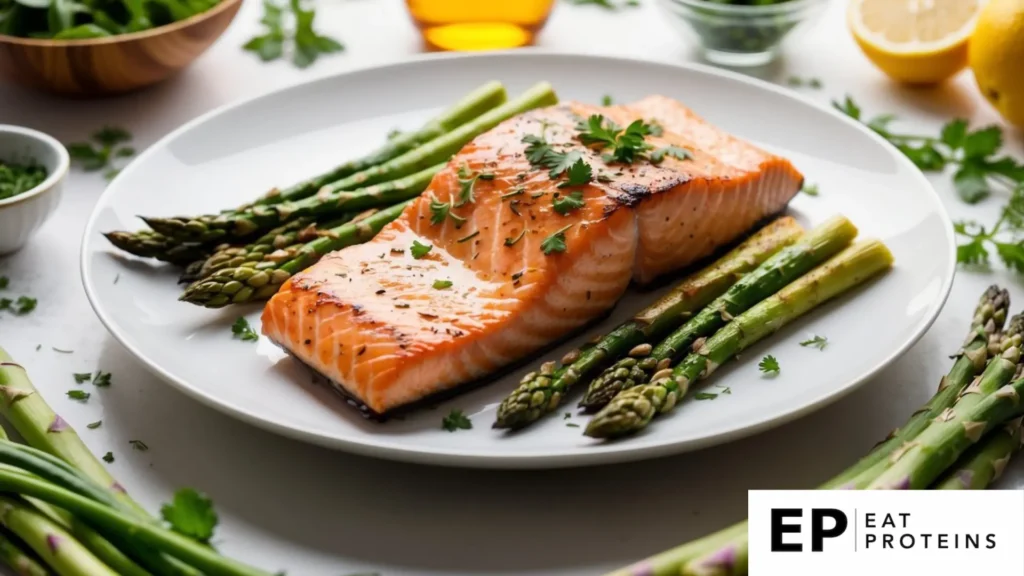
Grilled salmon with asparagus is a simple and healthy dish. Salmon is rich in omega-3 fatty acids and vitamins. Asparagus adds fiber and essential nutrients. Together, they make a balanced meal.
I find this recipe easy to prepare. First, I preheat my grill to medium-high heat. Next, I season the salmon fillets with salt, pepper, and a bit of olive oil.
Then, I trim the asparagus and toss it with olive oil, salt, and pepper. I place the salmon and asparagus on the grill. I cook the salmon for about 5-6 minutes per side, depending on the thickness. The asparagus usually takes around 4-5 minutes until tender.
I like to serve the salmon and asparagus hot, often with a squeeze of lemon. This dish can be enjoyed as a main course or as a healthy side. It is perfect for lunch or dinner.
7. Spinach and Strawberry Salad

Spinach and strawberry salad is a refreshing dish that balances sweet and savory flavors. Spinach is packed with vitamins, and strawberries add a burst of sweetness, making this salad both healthy and delicious.
I find this salad easy to make and perfect for any meal. The ingredients are simple and can be found at most grocery stores.
To prepare the salad, I follow these steps:
- Gather the Ingredients: I need fresh spinach, strawberries, nuts (like walnuts or pecans), and a dressing (balsamic vinaigrette works well).
- Wash the Spinach: I rinse the spinach leaves under cold water and dry them with a salad spinner or clean towel.
- Slice the Strawberries: I remove the tops of the strawberries and slice them into halves or quarters.
- Combine Ingredients: In a large bowl, I mix the spinach, strawberries, and nuts.
- Dress the Salad: I drizzle the balsamic vinaigrette over the top and gently toss the salad to combine all the flavors.
This salad can be served immediately or chilled for a refreshing side dish. It’s a versatile recipe that I enjoy any time of year.
8. Stuffed Bell Peppers with Rice
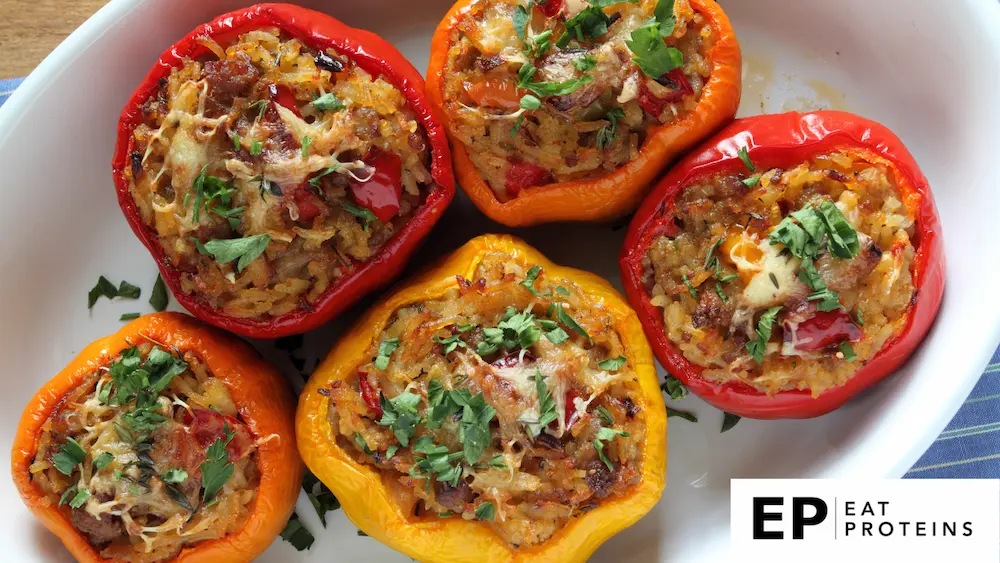
Stuffed bell peppers with rice are a nutritious and tasty dish. They are simple to make and a great way to include more vegetables in my meals. Each pepper is a vessel filled with a mixture of rice, beans, and seasonings.
To prepare this dish, I start by gathering my ingredients: bell peppers, cooked rice, black beans, diced tomatoes, and spices. The flavors blend well, making each bite delicious.
Here are the steps I follow:
- Preheat the oven to 375°F (190°C).
- Cut the tops off the bell peppers and remove the seeds.
- In a bowl, mix cooked rice, black beans, diced tomatoes, and spices.
- Fill each bell pepper with the rice mixture.
- Place the stuffed peppers in a baking dish and cover with foil.
- Bake for about 30 minutes.
- Remove the foil and bake for an additional 10 minutes for a nice finish.
This meal is versatile too. I can substitute ingredients based on what I have at home. Whether I use quinoa or add different vegetables, each version is enjoyable.
9. Turkey and Kale Meatballs
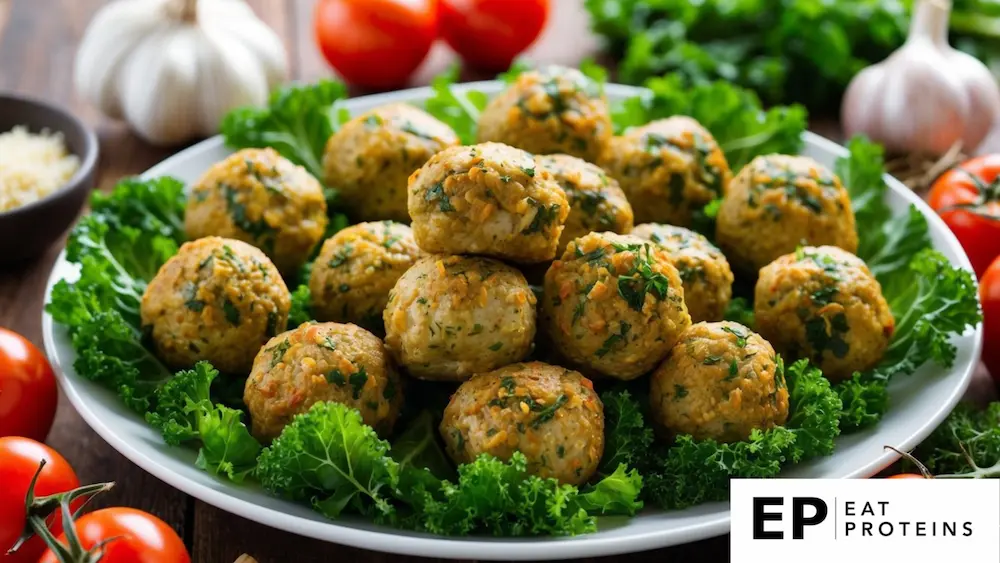
Turkey and kale meatballs are a nutritious and delicious choice. They fit well into a whole foods diet because they use simple, whole ingredients.
Making these meatballs is easy. I appreciate that they combine lean turkey with leafy kale, offering a good amount of protein and nutrients.
Here’s how I prepare them:
- Preheat my oven to 400°F (200°C).
- In a bowl, mix 1 pound of ground turkey, 1 cup of chopped kale, 1/2 cup of breadcrumbs, 1 egg, and my favorite spices.
- Form the mixture into balls, about 1 inch in diameter.
- Place the meatballs on a baking sheet and bake for 20-25 minutes.
These meatballs can be served on their own or with a sauce. I like to pair them with marinara or toss them into a salad. They are easy to make and delicious, making them a great addition to my weekly meal prep.
What Are the Benefits of a Whole Foods Diet?
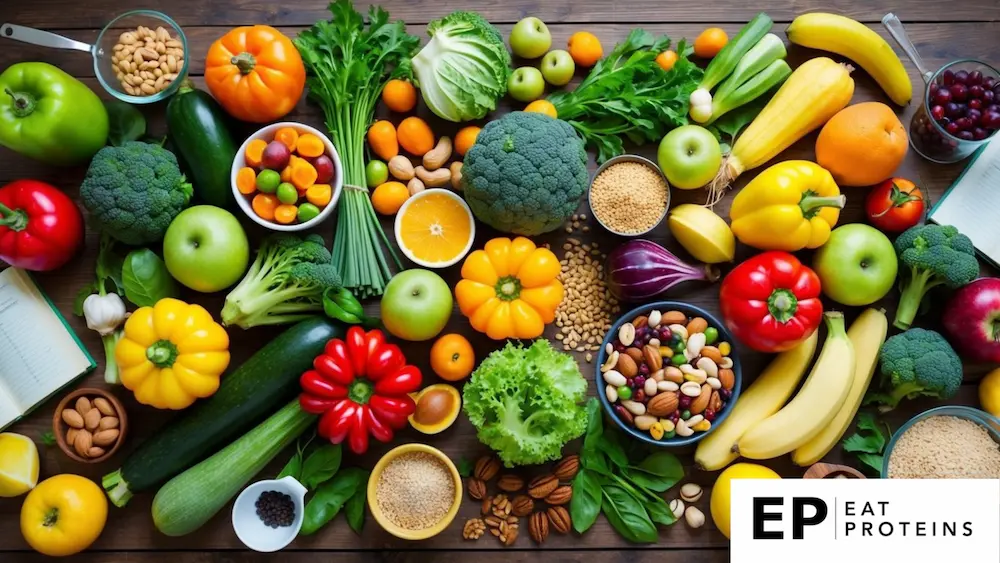
A whole foods diet provides numerous advantages for those seeking to improve their health. Focusing on nutrient-dense foods leads to better nutrition and has positive effects on overall wellness.
What Are the Nutritional Advantages of a Whole Foods Diet?
One of the biggest benefits of a whole foods diet is its rich nutrient profile. Whole foods, such as fruits, vegetables, whole grains, nuts, and seeds, are packed with vitamins, minerals, and fiber.
These foods often have less added sugar, salt, and unhealthy fats.
For example, eating a variety of colorful vegetables boosts my intake of antioxidants, which help fight inflammation. Whole grains, like quinoa and brown rice, provide essential carbohydrates and fiber, promoting good digestion.
Here’s a quick look at the nutritional content:
| Food Type | Key Nutrients |
|---|---|
| Fruits | Vitamins, Fiber |
| Vegetables | Minerals, Antioxidants |
| Whole Grains | Fiber, B Vitamins |
| Nuts and Seeds | Healthy Fats, Protein |
Eating whole foods ensures that I get adequate nutrition while reducing the risk of deficiencies.
What Is the Impact of a Whole Foods Diet on Overall Health?
A whole foods diet also significantly impacts overall health. Research shows that consuming these foods can lower the risk of chronic diseases like heart disease, diabetes, and certain cancers.
For instance, the high fiber content found in whole foods promotes heart health and helps maintain healthy cholesterol levels.
Additionally, fewer processed foods mean lower levels of harmful additives and preservatives.
I have noticed improved energy levels and better mood stability since focusing on whole foods. Regular consumption of these foods can also support weight management due to the natural satiety they provide.
This leads to healthier eating habits and choices.
How to Transition to a Whole Foods Diet?
Transitioning to a whole foods diet can seem challenging, but it is a rewarding choice for better health. By focusing on natural foods and minimizing processed items, I can make significant improvements in my nutrition and well-being.
What Are Whole Foods?
Whole foods are foods that are as close to their natural form as possible. This includes fruits, vegetables, whole grains, nuts, and seeds. They are typically less processed and do not contain added sugars, unhealthy fats, or artificial ingredients.
I find that choosing whole foods means selecting items from the perimeter of the grocery store. These areas usually feature fresh produce, meats, and dairy. On the other hand, the center aisles often contain packaged, processed foods filled with preservatives.
A whole foods diet emphasizes variety. Eating different colors and types of produce ensures I get a wide range of nutrients. This approach can help reduce the risk of chronic diseases and support overall health.
What Are the Steps to Start a Whole Foods Diet?
To effectively transition to a whole foods diet, I can follow these steps:
- Evaluate My Current Diet: I should keep a food journal for a week to identify processed foods that I consume regularly.
- Gradual Change: Instead of overhauling my entire diet at once, I can start by swapping one item per meal. For example, I can replace white rice with quinoa or brown rice.
- Plan My Meals: Planning helps me avoid last-minute unhealthy choices. I can create a weekly menu focused on whole foods.
- Explore New Recipes: Trying new whole foods recipes keeps meals exciting. I enjoy finding ideas that incorporate legumes, whole grains, and vegetables.
- Shop Smart: I can prioritize shopping at farmers’ markets and grocery stores that focus on natural products.
These steps can make my transition smoother and more enjoyable.
